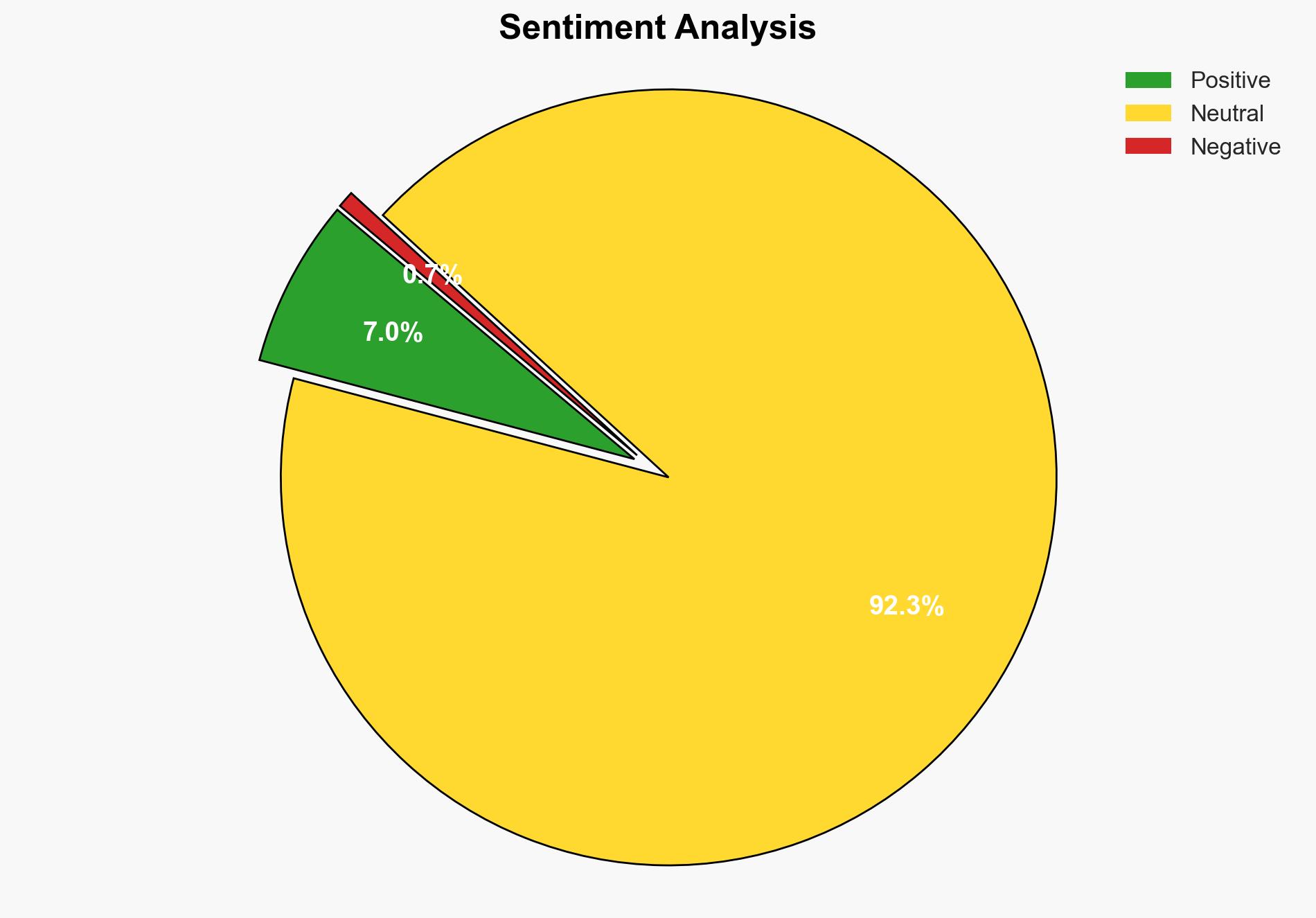Massive Mesopotamian canal network unearthed in Iraq – Live Science
Published on: 2025-03-07
Intelligence Report: Massive Mesopotamian Canal Network Unearthed in Iraq – Live Science
1. BLUF (Bottom Line Up Front)
Researchers have discovered an extensive Mesopotamian canal network near Basra, Iraq, which supplied water to ancient farms in the Eridu region from the Euphrates River. This finding provides rare insights into ancient Mesopotamian irrigation practices and highlights the ingenuity and adaptability of early farmers. The discovery has significant implications for understanding ancient agricultural systems and regional historical developments.
2. Detailed Analysis
The following structured analytic techniques have been applied for this analysis:
SWOT Analysis
Strengths: The discovery enhances understanding of ancient irrigation systems and demonstrates the advanced engineering capabilities of early Mesopotamian societies.
Weaknesses: The current geopolitical instability in the region may hinder further archaeological exploration and preservation efforts.
Opportunities: The findings can promote cultural heritage tourism and educational initiatives, potentially boosting local economies.
Threats: Ongoing conflicts and environmental changes pose risks to the preservation of these archaeological sites.
Cross-Impact Matrix
The discovery may influence neighboring regions by encouraging similar archaeological explorations, potentially leading to further historical revelations. Additionally, it may affect regional policies regarding cultural heritage preservation and tourism development.
Scenario Generation
Best-Case Scenario: Stable political conditions allow for comprehensive archaeological studies and the development of cultural heritage sites, boosting local economies.
Worst-Case Scenario: Continued regional instability leads to the neglect and potential destruction of archaeological sites, resulting in the loss of historical knowledge.
Most Likely Scenario: Partial exploration and preservation efforts occur, with intermittent disruptions due to regional conflicts.
3. Implications and Strategic Risks
The discovery of the canal network poses strategic implications for cultural heritage preservation and regional stability. Risks include potential damage to archaeological sites due to environmental factors and geopolitical tensions. The findings may also influence regional identity and historical narratives, impacting national and cultural cohesion.
4. Recommendations and Outlook
Recommendations:
- Enhance security measures to protect archaeological sites from damage due to conflict or environmental factors.
- Promote international collaboration for archaeological research and preservation efforts.
- Develop educational programs to raise awareness of the historical significance of the findings.
Outlook:
Best-Case: Increased international interest and investment in regional archaeology lead to significant advancements in historical knowledge and economic benefits.
Worst-Case: Ongoing instability results in the deterioration of archaeological sites and loss of potential cultural and economic opportunities.
Most Likely: Gradual progress in archaeological research with intermittent challenges due to regional dynamics.
5. Key Individuals and Entities
The report mentions Patrick Pester as a contributor to the dissemination of the findings. Further details on involved researchers and institutions are not specified in this report.





